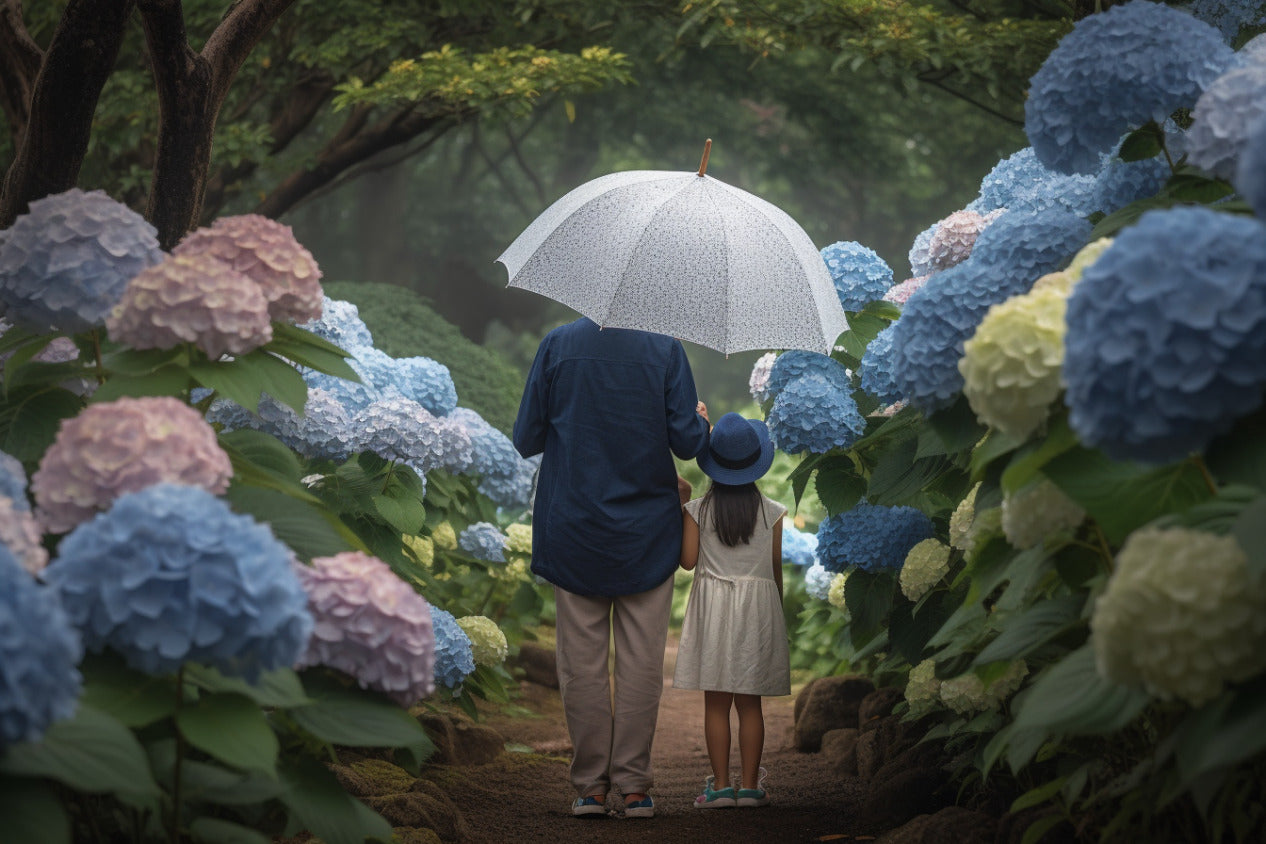Japan's rainy season starts in early summer, between May and July, depending on the region. The wet weather continues for several weeks of rain. For most travelers, the rainy season isn't the ideal time to visit Japan.

During the Edo period(1600~1868), the kanji characters for "梅雨" (tsuyu, meaning "rainy season") are said to have been introduced to Japan from China.

There are various theories as to why the kanji characters "梅" (ume, meaning "plum") and "雨" (ame, meaning "rain") were used. One plausible theory is that it originated from the lower reaches of the Yangtze River in China, where the season when plums ripen coincides with early summer, which is the same time as the rainy season. (The peak season for plum blossoms in Japan is from February to March, but the fruits grow larger around June.)

If you have walked the streets of Japan during the Tsuyu, 梅雨 (rainy season), then you will have undoubtedly seen a mismatched horde of clear, plastic umbrellas, that hovers over the heads of people.

Japan's transparent plastic umbrellas have become synonymous with rainfall. It is almost certain that every Japanese individual has possessed an umbrella of this particular design at some stage in their life. According to the Global Umbrella Study, Japan boasts the highest per capita umbrella count in the world, reaching 3.3, while the global average stands at 2.4.
Does Japanese Sweets work for "Summer Purification"?

Minazuki, a traditional Japanese confectionery originating from Kyoto, is renowned for its distinctive triangular shape comprising two layers. The foundation consists of Uirō, a steamed rice cake, while atop it rests sweetened azuki beans. The delightful blend of the chewy uirō and the sweetness of the azuki beans produces a refreshing and delectable flavor.

How about Edo Kiriko glass with chilled grean tea?
"Nagoshi no Harae" (夏越の祓)

"Nagoshi no Harae" is a Shinto ritual that takes place on June 30th, marking the halfway point of the year. During this ceremony, impurities accumulated over the past six months are cleansed, and prayers are offered for good health and well-being for the remaining half of the year. At the shrine, a large ring made of cogon grass is installed, taller than a person's height. Visitors pass through this ring as a means of warding off misfortune.


